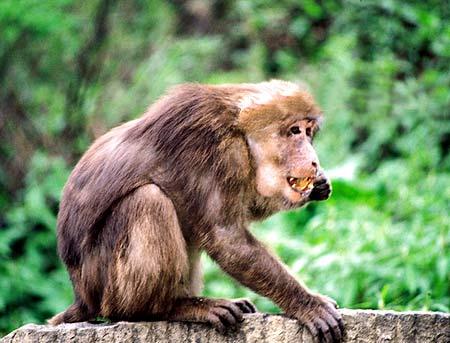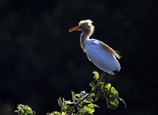
 |
| Mt. Emei |
(2) Mt. Emei has unique geological characteristics
Mt. Emei has preserved a relatively complete sedimentary stratum from the Precambrian period, providing precious geological data for the biological evolution research of the earth's crust. The intrusive rock and volcanic rock generated by the intrusion and eruption of magma have provided typical examples for the research of the mechanism of the upper mantle, the tension fracture of the lithosphere and crustal transformation. The complex structural deformation of crust caused by the Yanshan Movement and the Himalayan Movement has provided sufficient basis for researching the surface structure of the crust.
Meanwhile, the Neotectonics, which caused the magnificent and spectacular geological structure of Mt. Emei and the typical and multiple modern landscapes, provided the prerequisites for biological reproduction and breeding, as well as the establishment of peculiar middle and high mountain ecological kingdoms. The background and conditions have formed an organic whole, creating the aesthetic image and scientific content of Mt. Emei and its special and dominant status in the world's mountain landscapes.
(3) Mt. Emei has a variety of plants and typical subtropical vegetations.
The vegetation on Mt. Emei has a unique position and significance in the world:
(I) Mt. Emei has the world's most typical and best preserved subtropical vegetation and a original and complete subtropical forest belt, including evergreen broad-leaved forests, a mixed forest of evergreen broad-leaved forests and broadleaved deciduous forests, as well as a mixed forest of coniferous forests and broad-leaved forests from bottom to top.
(II) The plant species are abundant, with more than 3,200 known higher plants from 242 families growing in the peculiar and diverse forests. The mountain which is only 154 square kilometers is unique and the only one in the world's subtropics regions. Not only are the plant types and species rich here, but the animal species are also extremely rich.
(III) There are also numerous original and endemic species, including over 100 higher plants. There is a variety of ancient and endangered plant species, among which, 31 are under national protection.
(IV) The flora of Mt. Emei is located in the Himalayas in China and the China-Japan floristic sub-region, and has important value for researching the world's biota.


















 Wild Siberian tiger kills cattle in NE China
Wild Siberian tiger kills cattle in NE China


![]()
